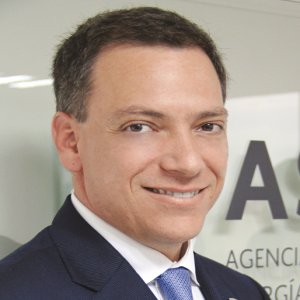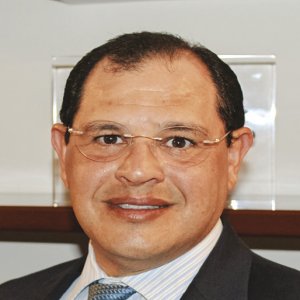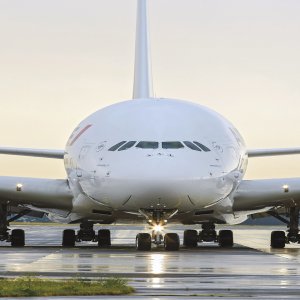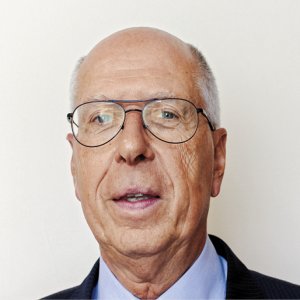Embracing the Digital Challenge

STORY INLINE POST
Q: How does Mexico fit into HSBC’s global strategy?
A: HSBC is a world-leading bank, with a presence in roughly 70 countries. It is a leader in global banking activities including trade finance, worldwide cash management and funding of capital flows. HSBC has the largest finance network in the world, connecting all the globe’s relevant economies. In this context, Mexico is one of the most open economies in the world, with a GDP of roughly US$1 trillion and trade flows of around US$800 billion. The bank and the country are a perfect fit; we connect Mexico’s economy to the rest of the world.
Additionally, we have a strong relationship with Mexico’s most important commercial partners. For instance, HSBC is the only bank with a relevant presence in the three NAFTA countries. We are the biggest foreign bank in Canada, we have a strong presence in the US and we are among the Top 5 banks in Mexico. The second-most important economic corridor for Mexico is Asia and HSBC is the most powerful bank in that region. This makes us the main bank for NAFTA and the main bank for the Asian corridor.
Q: Taking into consideration Mexico’s particularities, how has HSBC adapted its banking proposition to the Mexican market?
A: In Mexico, HSBC has two pillars: our global business, which connects Mexico to the world, and the local business, which is retail banking. International business segments, such as cash management and trade finance, are fairly similar across the globe; what we provide the Mexican economy is worldwide integration. In the retail segment, we have 1,000 branches across the country, our largest number anywhere. We have more branches in Mexico than in the UK.
Q: How much of a challenge to operations is Mexican bureaucracy?
A: I find that the two main areas that need to be addressed are the quality of education and law enforcement. Education is a pillar for any economy that wants to be competitive in the long term. In the last five years, Mexico has started to significantly change its education model, but we must recognize that there is still much to do to reach an acceptable level. When it comes to law enforcement, the country needs to make sure that laws are applied. The problem is not the legal framework; in fact, Mexican law is quite good. The problem is that enforcement does not work as it should. However, I believe there is a consensus between the government, political parties, civil society and the business sector to ensure that this pillar is managed in a different way.
Q: What strategies should be put in place to further the use of digital payment methods and reduce the use of cash?
A: About three or four years ago, HSBC recognized that it needed to embrace the digital challenge and take it to the next level. Globally, HSBC initiated its Retail Transformation Program, in which the bank has invested almost US$1.7 billion in its Top 6 countries, which includes Mexico. Our digital platforms, including online and mobile banking, have been updated, we have implemented voice recognition at our call centers and we have significantly improved our ATMs. The bank will continue implementing more changes in the coming months.
The organization is entering a phase in which new digital technologies and innovations are the focus of our strategy. In the specific case of Mexico, we are launching new Customer Relationship Management (CRM) infrastructure and we are also partnering with many fintechs. An example of this is Control Total, an app we have just launched that basically allows users to control their credit card from their mobile phone. This development is the result of our partnership with fintech companies.
Five years ago, the relationship between banks and fintechs was of a confrontational nature. On hand, banks were suspicious of fintechs because they seemed to have the tools to take our market and on the other, fintechs believed they could take over the market and that they did not need banks. Today, fintechs understand that without the banks’ customer base they cannot provide their services and if they want to become banks, they need to be regulated.
Q: What has allowed the fintech sector to prosper?
A: I think it has to do with the fact that it comes from outside the banking industry, meaning that it is much more agile and not regulated. The fact that it has less limitations has allowed for new ideas to come to the table in a freer environment that still keeps the customer in mind.
Q: Beyond NAFTA, what is Mexico’s value proposition to the world?
A: Mexico plays an important role in the region’s competitiveness and that is something that we cannot ignore. This region has a population of more than half a billion people and it is also one of the wealthiest parts of the world. Many products manufactured in the US can only continue being manufactured in the US if Mexico produces most of the components and sends them to the US.
In terms of imports, Mexico has also become important for Asia, while its interaction with Europe is growing tremendously every year. The three most important economic engines of the world have an important commercial relationship with Mexico.
With or without NAFTA, Mexico continues to be competitive and our view is clear: there will be a NAFTA 2.0. We believe there will be some changes in rules of origin and labor standards and we will see the incorporation of sectors such as energy and e-commerce. There is a risk that NAFTA will not be renegotiated that cannot be ignored. But I think that it is a small risk. Nevertheless, with a population of 125 million and a relevant demographic advantage, Mexico has the opportunity to develop its internal market.
Q: What are HSBC’s expectations for year 2017 and the near term?
A: In 2015, HSBC initiated a turnaround. That year, we generated roughly US$50 million in profit before taxes (PBT). For 2017, our forecast is US$450 million PBT and by 2020 we expect to reach US$1 billion PBT. This is our next step.
HSBC is among the world’s largest banking and financial services companies. With four business units – Retail Banking and Wealth Management, Commercial Banking, Global Banking and Markets and Global Private Banking.
























